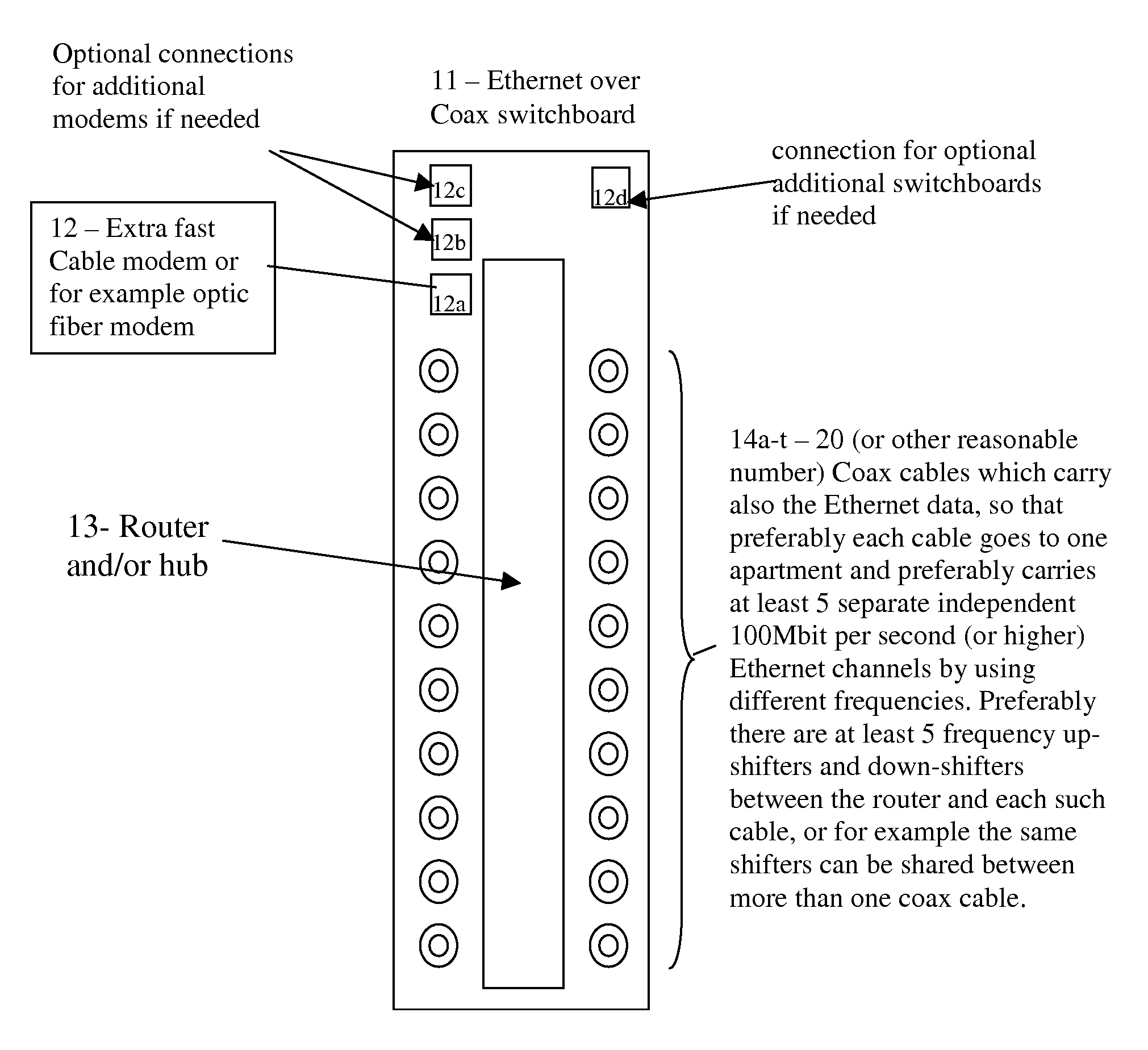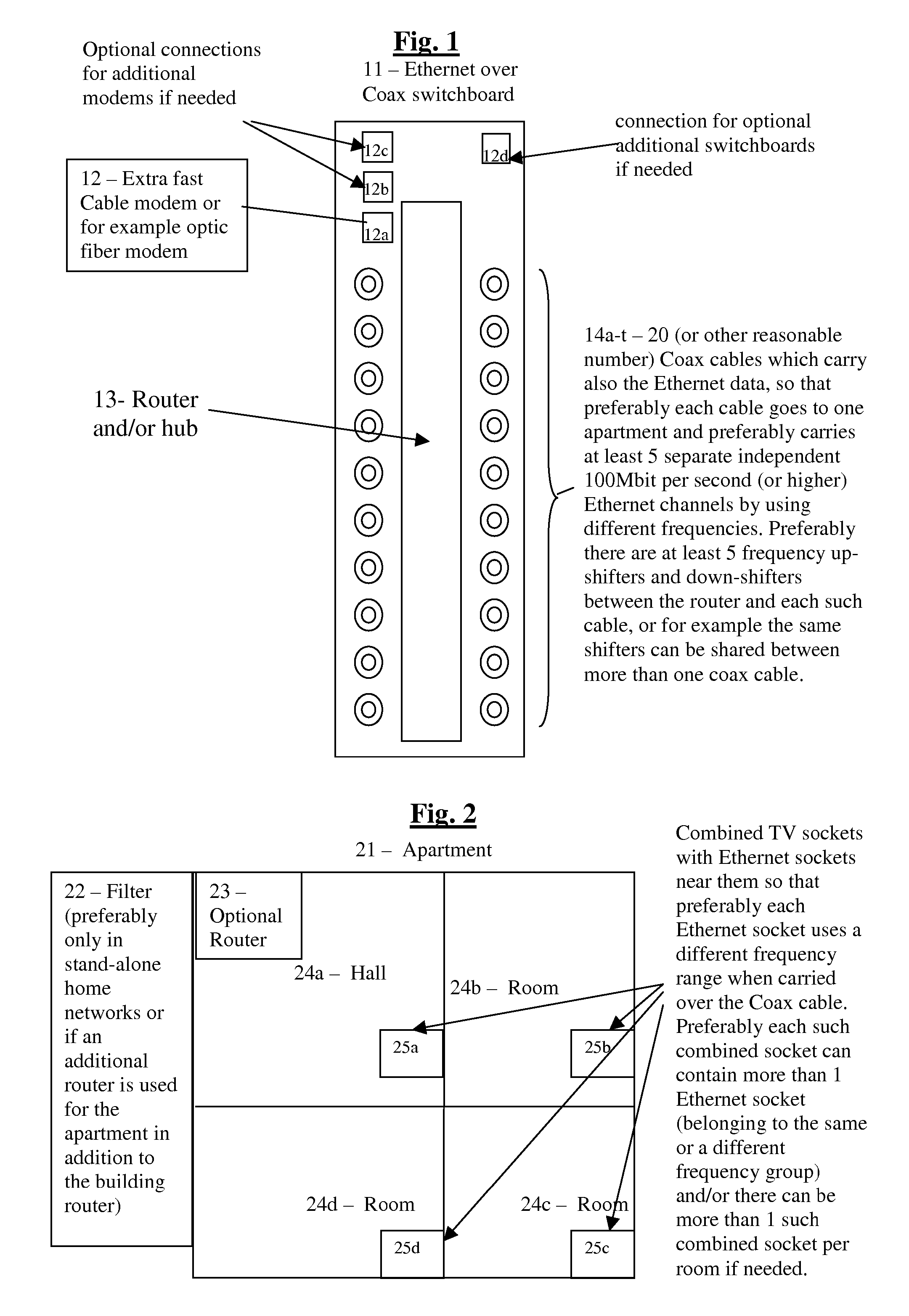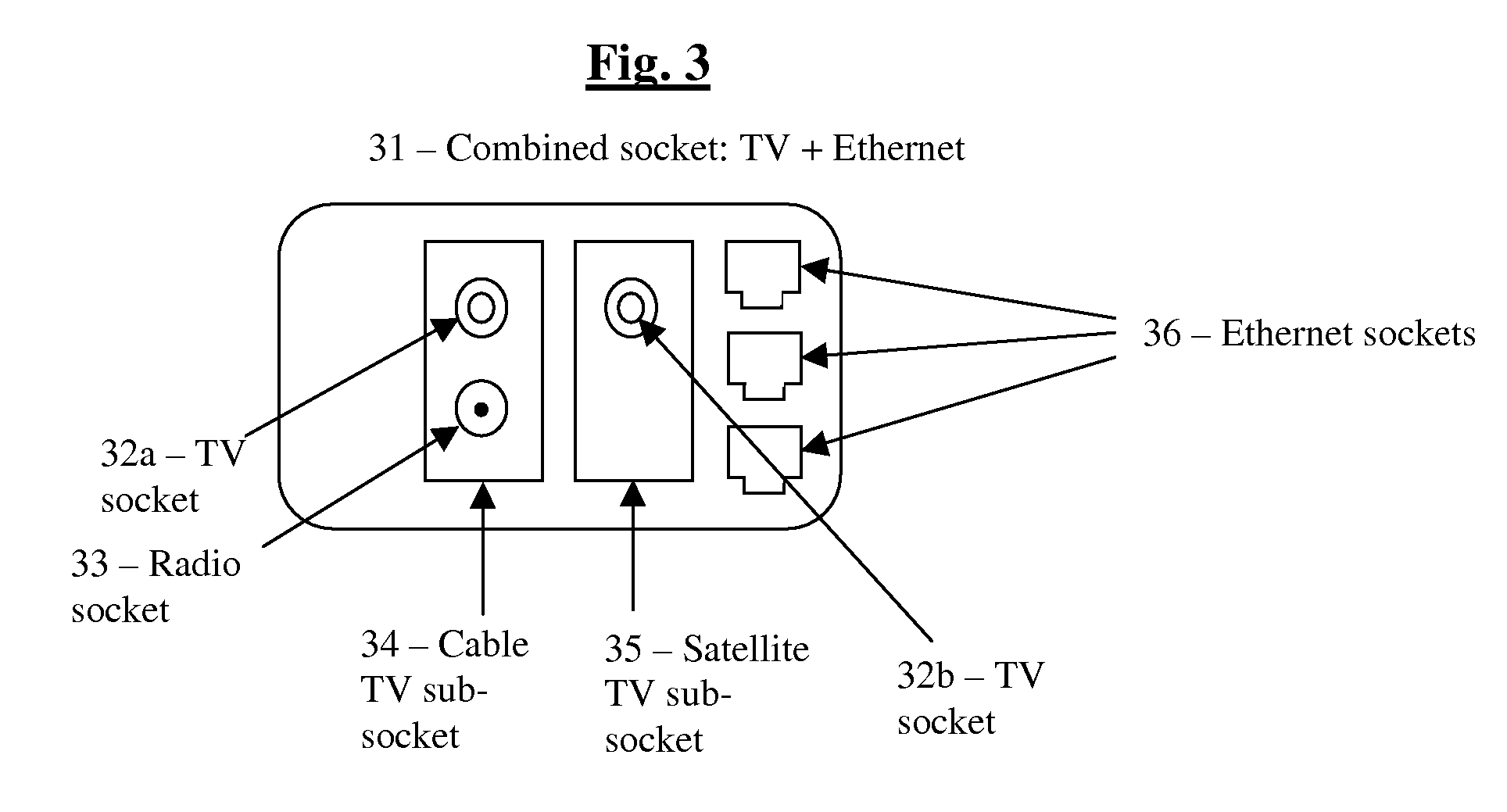System and method for creating cheap efficient high-speed home networks.
a high-speed home network, cheap technology, applied in the direction of digital transmission, telephonic communication, electromagnetic transmission, etc., can solve the problem of less efficient course, and achieve the effect of avoiding bandwidth collisions with neighboring apartments and less sa
- Summary
- Abstract
- Description
- Claims
- Application Information
AI Technical Summary
Benefits of technology
Problems solved by technology
Method used
Image
Examples
Embodiment Construction
[0024] All of the descriptions in this and other sections are intended to be illustrative examples and not limiting.
[0025] Referring to FIG. 1, we show an illustration of a typical configuration of one or more shared building units (11), each unit preferably connecting multiple apartments, with preferably at least one coax cable (14) for each apartment (in this example there are 20 such coax cables, marked 14a-t, but of course this can be also any other reasonable number), so that preferably for example at least 5 separate Ethernet frequencies are preferably used over the same coax cable preferably for each apartment. Preferably there are for example at least 5 frequency up-shifters and down-shifters between the router and / or hub (13) and each such cable, or for example the same shifters can be shared between more than one coax cables. The shared unit or switchboard (11) preferably connects (for example through connectors 12a-c) to the Internet for example with 1 or more extra fast...
PUM
 Login to View More
Login to View More Abstract
Description
Claims
Application Information
 Login to View More
Login to View More - R&D
- Intellectual Property
- Life Sciences
- Materials
- Tech Scout
- Unparalleled Data Quality
- Higher Quality Content
- 60% Fewer Hallucinations
Browse by: Latest US Patents, China's latest patents, Technical Efficacy Thesaurus, Application Domain, Technology Topic, Popular Technical Reports.
© 2025 PatSnap. All rights reserved.Legal|Privacy policy|Modern Slavery Act Transparency Statement|Sitemap|About US| Contact US: help@patsnap.com



